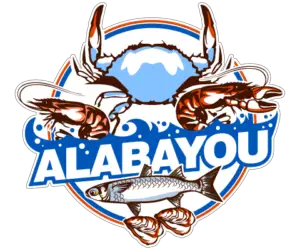Whether you’ve been invited to a fish fry or are looking to host one, you should start by knowing what it is. It sounds like a french fry but with fish. Actually, it is not a dish or a side dish.
So, what is a fish fry? A fish fry is a cook out-like event where breaded/battered fried fish is served with sides like french fries, coleslaw, bbq baked beans, and hushpuppies.
In this article, we will go over fish fry (the event) and discuss what’s served in each type of fish fry across America and even in a few other countries.
By the end of this post, you’ll also know the best practices for hosting and attending a fish fry no matter where you are.
To make things even more confusing, the term “fish fry” is also used for the name of the batter used to coat the fish before frying. This explains how the gathering called “fish fry” got its name.
But before we get to the different types of fish fries, let’s address why fish fries are different (and read this article on “what is fried fish?” if you need a refresher on what fried fish is).

Why Are Fish Fries Different?
Fish fries are different because of the recipes and cultural/religious connotations around the events. In coastal fishing towns, fish fries are family events.
Deeper in the south, fish fries are family/church events. And in the northwest, fish fries become more of a meal than an event.
Here is how you can make sense of the differences:
Recipes – As you may know, recipes travel and evolve across geography. Different towns and states have their own ways of preparing fried fish.
Fish – The fish that’s fried most often at a fish fry is usually the fish that is abundant in a particular town’s waters or market.
Tradition – The culture of a place dictates how important a fish fry is to it. Different regions emphasize it differently, which is why all areas will not get the same coverage in this post.
The Different Types of Fish Fries
In this article, we will go over the different fish fry’s held across the US.
You will discover not just the main differences, but also the reasons behind said differences so you can know your fish fry regardless of where you are.
Northern Eastern Fish Fries
In the North East, especially in big cities, fish fry refers to the meal.The actual event aspect is not as common in the north as in small fishing towns or in the deep south.
The northern fish fry is aided with a side of corn on the cob or french fries and is ordered at restaurants.
A northern fish fry meal includes:
- Breaded fish fillet or cod
- Fries
- A soft drink
Southern Fish Fry
Coastal fishing towns have survived on small-scale and medium-scale fishing. For the residents of these towns (up until the corporate and government erasure of fishing traditions), frying freshly caught fish has been one of the best things about being in a coastal state.
Add to that the southern hospitality aspect, and you get the southern fish fry, which is one of the most generous affairs.
A southern fish fry is a potluck that almost always exceeds a dozen attendees. However, some fishing families hold them on a much smaller scale.
I grew up in Bayou La Batre, which is a fishing town in the deepest south of Alabama. Most of the fish fries we had were family events conducted after mullet fishing (friendly reminder: “Eat More Mullet!”) with gill nets.

Despite being a kid, I felt like a host. In the southeast, a fish fry is a part of almost every grown-up’s childhood.
Many people who grew up in the southeastern fishing area moved towards the landlocked south for jobs because regulations have been killing the local fishing industry.
Fish fries traveled along with these residents and spread to Middle America.
A southern fish fry meal typically includes:
- Fish battered with milk/buttermilk, cornmeal, and seasonings – Mullet, Flounder, Bass, and Catfish are often chosen for this.
- Sides – Coleslaw, hushpuppies, and corn fritters are some of the sides served. Among these, coleslaw seems non-negotiable.
- Beverages – These can be alcoholic depending on the type of fish fry.

Midwest (The Hart Land) Fish Fry
Middle American fish fries are religious affairs because the traveling tradition met a firm regional institution in Christianity.
During the 40 days of Lent, meat-eating is restricted on Ash Wednesday and Fridays. Since only warm-blooded animal meat is restricted, Christians don’t go vegan or vegetarian during lent; they become pescetarians (vegetarians who eat fish) on specific days of lent.
Many churches make fish fry’s a recurring Friday tradition for this very reason. It is a social affair that has religious connotations in small towns.
The further you go from the coast, the less familial fish fry’s get and the more spiritual it gets.
The meal includes:
Fish – Often provided by the church in portion and brought by guests
Sides – Corn on the cob and fries are often the sides of choice. Many guests bring everything from homemade biscuits to sweets. Sides that contain meat are not included.
Beverages – Mostly, lemonade or soft drinks are served.
West Coast Fish Fries
Unlike the middle American portion of the midwest, the people who live in the coastal towns in the Midwestern US have fish fry throughout the year.
Beer batter is more common with fish fries, and the affair is often more religious because of the prominence of the Orythdox, Catholic, Anglican, and Lutheran traditions.
The meals include:
Fish – Beer battered cod, perch, smelt, and walleye.
Sides – Fries, baked beans, coleslaw, rye bread, and/or potato pancakes.
Sauces – Tartar sauce, garlic dip, and/or ketchup.
International Fish Fries
International fish fries are similar to big-city fish fries in the US – a fried fish meal with sides served at a restaurant would be called a fish fry.
While Gulf countries have their fish-meal traditions, none of them are marine-specific cookouts like the American coastal areas.
There is a very small pocket of the world where the term fish fries refers to fish fingers fried to look similar to french fries. This processed food is as removed from the fish fry traditions of America as can be.
Which is the Best Fish Fry?
The beauty of American fish fry’s is that their differences all have their respective pros.
New York and California fish fry’s are great for busy people who want the meal but don’t care about the process.
Midwestern fish fry’s, as well as fry’s held in middle America, are better for Christian traditions.
Overall, southern fish fry’s are the best because they combine great cooking with southern hospitality and produce a great tradition that continues to live on despite the challenges to the small fishing towns in the coastal south.
Before we examine how recent changes affect fish fries, let’s go over some fish fry etiquette.

Best Practices for Hosting (and Attending) a Fish Fry
Now that you know what a fish fry is, let’s explore some universal best practices for hosting and attending one. They are nice at every type of fish fry, but the expectation varies based on context. And that will be addressed under each practice.
The Host: Must Know His Recipes
We have discussed a few types of fish frying traditions earlier. The region where your fish fry is being held dictates the guests’ expectations.
If your best buddy wants to kill time with you, you have more room to try alternative recipes. What’s crucial is that you really know how to prepare delicious fried fish.
The Guest: Should Bring Something Usable
When you’re a fish fry guest, it helps bring something for the host. Since it is not a formal party, you don’t have to get a gift for the host but can bring something that will make the frier’s life easier.
Anything from drinks to paper towels can help. This depends on the size of the gathering, though. Some fish fries are so massive that you cannot treat them like a potluck for sides.
But then again, if twenty people all bring something and you’re the only one without a contribution, you could look bad.
*Pro Tip: It always helps to ask the host on what you can bring.
The Host: Must Have More Food Than People
If you’re a fish fry host, you have to be a generous host, which means getting enough fish, sothe fry doesn’t run out. Unlike parties and picnics, where the meals are pre-cooked, you have the luxury of having uncooked food.
If the guests have had enough, you can always stop frying and freeze the uncooked fish.
A good rule of thumb: Assume a 20% higher attendance and cook with an inflated attendance number in mind. Always assume someone will bring a friend.
The Guest: Shouldn’t Leave Anything on the Plate
Some traditions are more forgiving of leftovers than others. But as far as it goes in *place*, you don’t leave anything on the plate.
If you’re attending a fish fry in the south or the midwest, you might want to skip snacks and meals prior to the fish fry. This will allow you to clean your plate and eat plenty of fish.
The Host: must offer sides and drinks with the meal
Continuing on the subject of the sides, one of the most crucial, almost mandatory, aspects of a fish fry is to have something other than the fish.
And that “something” has to align with the cultural expectations of the region where it is hosted. We covered sides quite extensively earlier in this post.
The Guest: Must Not Aim Exclusively for the Main Dish
Eating just the fried fish at a fish fry can be selfish because there might not be enough fish for others. Fix a nice place of fish and sides, and eat everything on your plate.
A fish fry is supposed to be enjoyed as a meal where all the sides are to be relished.
The Host: Must Make the Cooking Experience Social
The host’s job is to fry the fish alongside other designated cooks. Sometimes, this can lead to a dichotomy where the cooks end up cooking only, and the guests end up socializing among themselves.
As a result, the hosts start feeling like the servants of the non-cooking guests.
It is the host’s duty, though, to be open and social even while frying. If you don’t do that as a host, the guests might think they are bothering you if they talk to you.
The Guest: Must Help Keep the Frying Part Social
Unless the host signals with his words or (very obvious) body language that he does not want to be bothered, you should try to interact with the host while he is frying fish and preparing sides. This can be very helpful and uplifting.
“Do you need help with anything?” is an excellent way to start if you don’t have a subject to discuss.

Protecting the Fish Fry Tradition
From countries where fish fry’s are just fish-pulp-filled french fries to our own big cities where the term refers to a fried fish meal without any social element, it is clear that the fish fry tradition is being protected by two factors: fishing towns and Lent observers.
And with the over-regulation of fishing, small-time fishermen and fishing families are being driven to factory jobs,this poses a threat to the fish fry tradition.
If no one protects fishing practices on the coast, nothing can stop fish fries from becoming just a meal without any activity around it.
The family fish fry tradition will disappear when the fishing family is erased. Keep the family fish fry tradition alive.
